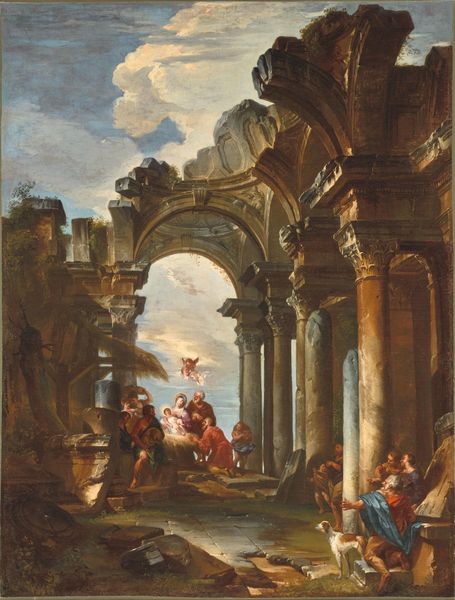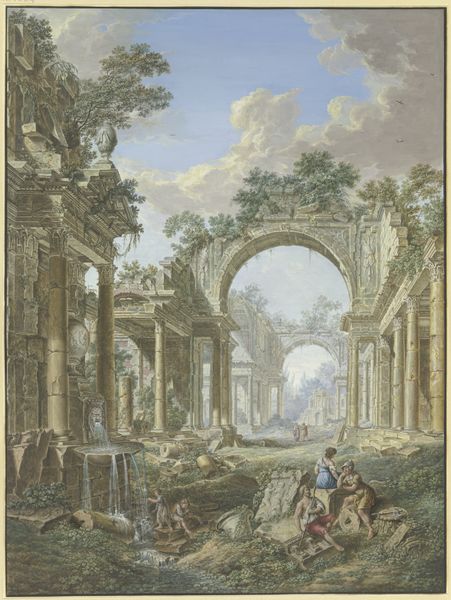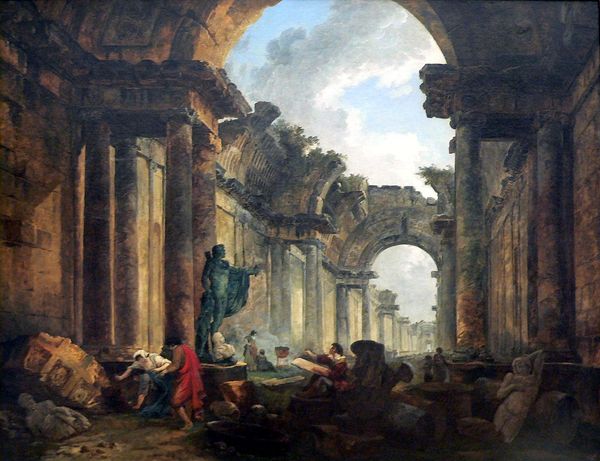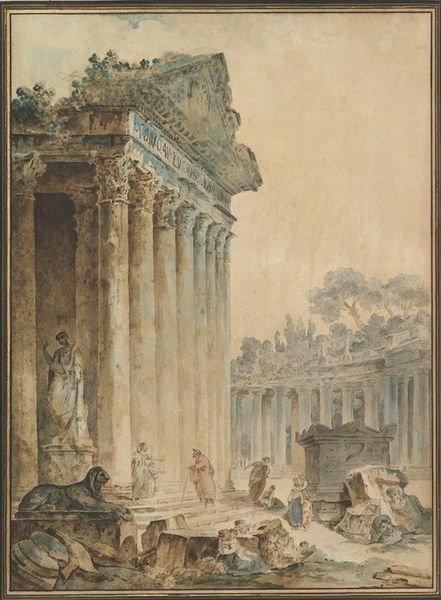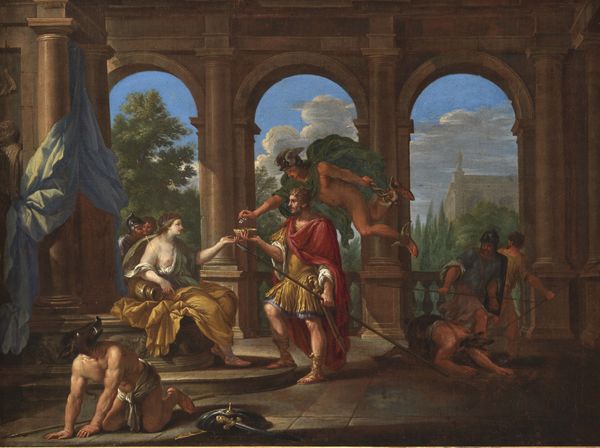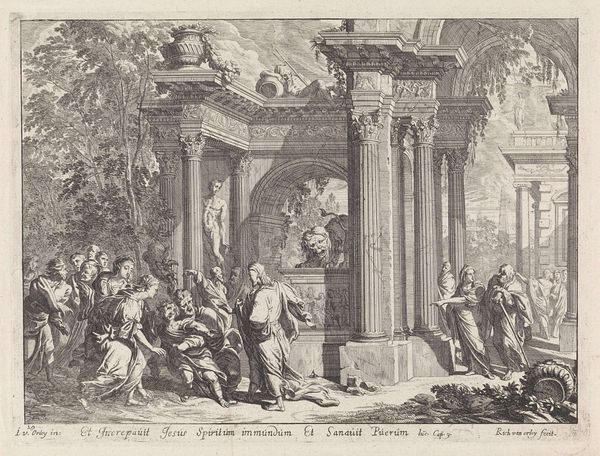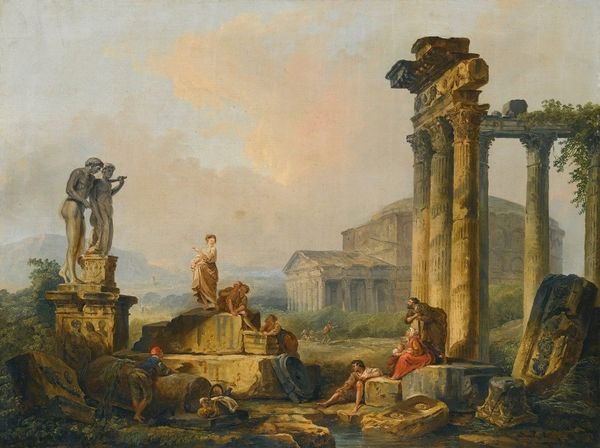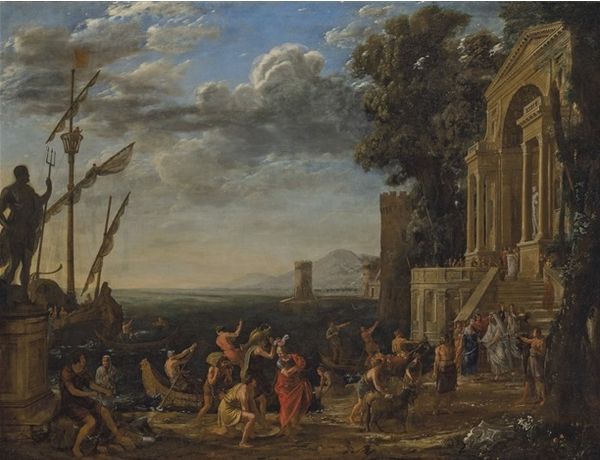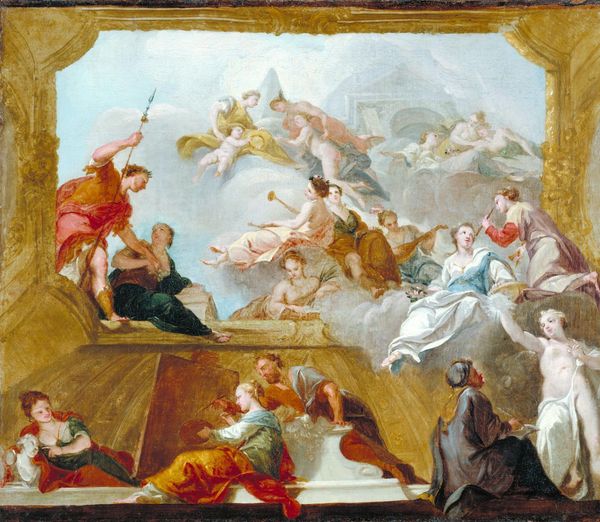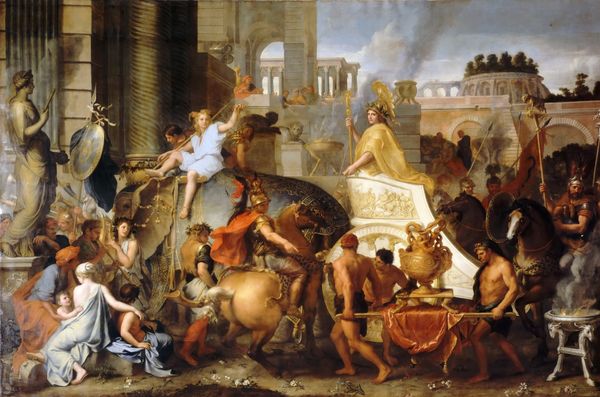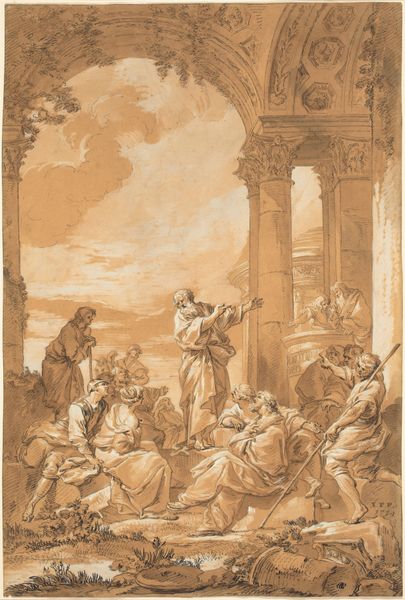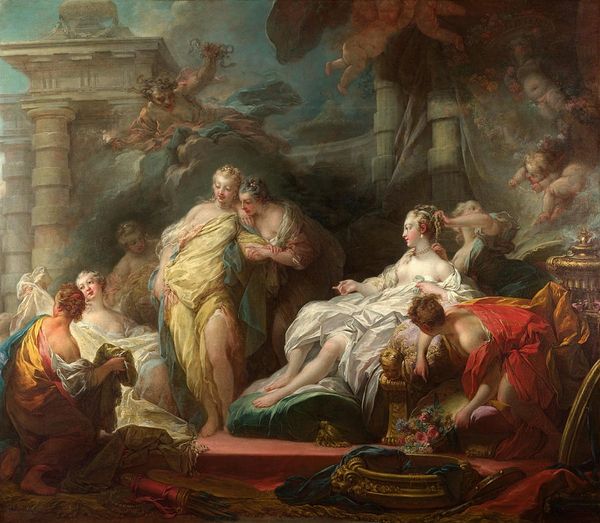
Dimensions: 99.7 x 76.2 cm (39 1/4 x 30 in.) frame: 120 x 97.3 cm (47 1/4 x 38 5/16 in.)
Copyright: CC0 1.0
Curator: Giovanni Paolo Panini, a Roman painter and architect who lived from 1691 to 1765, created this oil on canvas, "Adoration of the Magi." The painting, part of the Harvard Art Museums collection, presents a grand scene set among classical ruins. Editor: It feels dreamlike. The soft light, the crumbling architecture, the cherubic figures in the sky... it's a theatrical blend of grandeur and fragility. Curator: Panini often depicted ruins, reflecting the 18th-century fascination with antiquity and its impact on the present. But what about the biblical narrative, the Adoration itself? Editor: The Magi, rendered with such delicate features, present gifts before the Holy Family amidst these ruins, a stark juxtaposition. The ruins themselves symbolize the fall of pagan empires before the rise of Christianity, while the cherubs serve as visual symbols of divine approval. Curator: Indeed. Panini is making a statement about the Catholic church's place as an institution in the modern world, building on the foundations of antiquity, but also moving beyond. Editor: I see now – it’s more than just a pretty picture. The symbols and the setting work together to portray a powerful message about transformation and faith. Curator: Precisely. It prompts us to reflect on how institutions use visual language to reinforce their own legitimacy.
Comments
No comments
Be the first to comment and join the conversation on the ultimate creative platform.
